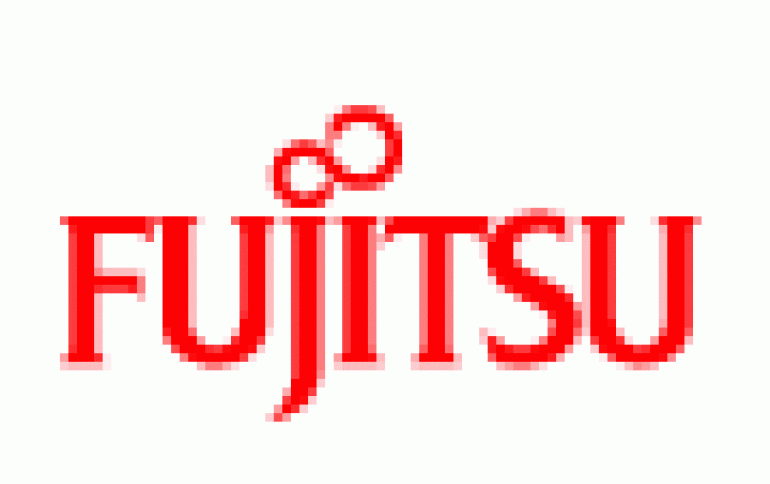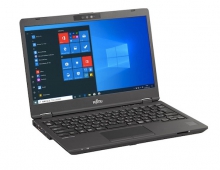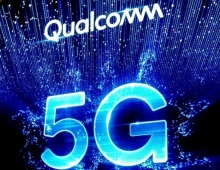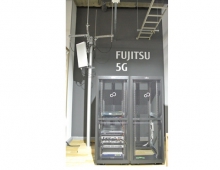
Fujitsu Achieves World's First 25Gbps Data Communication
Fujitsu and the University of Tokyo today announced the world's first quantum dot laser- based 25 Gbps high-speed data transmission.
Quantum dot lasers are a type of laser being anticipated as a next-generation semiconductor laser capable of handling high-speed data transmissions while consuming minimal power. As increasing the number of quantum dots is known to improve a quantum dot laser's operation speed, layers of quantum dots with a higher density than conventionally employed were stacked, thereby doubling the laser's operation speed and enabling a significant improvement over previous technologies. This new technology is expected to be employed for optical sources for next-generation high-speed data communications that aim to achieve data transmission speeds of 100 Gbps, ten times faster than current data transmission speeds.
Quantum dot lasers are semiconductor lasers which employ quantum dots - nanometer-sized semiconductor particles as an active material for lasing, which Fujitsu and Fujitsu Laboratories have developed in an industrial-academic collaboration with Professor Yasuhiko Arakawa's laboratory of the University of Tokyo. Quantum dot lasers feature significant advantages over other types of semiconductor lasers, such as being less sensitive to temperature fluctuations, while offering tremendous advances over previous semiconductor lasers in terms of lower power consumption, greater transmission distances, and faster speeds. Thus, there is much anticipation for quantum dot lasers to become a core technology for developing high-performance optical sources in the future, when there will be a tremendous rise in data traffic of optical communications.
Currently, 10 Gbps transmissions are the mainstream for data transmission. However, in view of the fact that transmission speeds are continually becoming faster, currently 100 Gbps Ethernet ("100 GbE") - which features data transmission speeds ten times as fast as currently available - is being promoted as an international standard for next-generation high-speed data communications. Accordingly, there is a need for laser light sources that can handle such next-generation high-speed data transmissions, while consuming only low power.
Quantum well lasers, which have conventionally been used as optical sources for data communications, have a problem of dramatic increases in power consumption attributable to increased driving current when temperatures rise. The quantum dot laser developed by Fujitsu Laboratories and the University of Tokyo uses 3-dimensional (3D) semiconductor nanostructures to produce quantum effects, thus giving it excellent characteristics, including stable operation over a range of temperatures and low power consumption. However, the quantum dot laser had been limited to handling data transfer speeds up to 10 Gbps.
In order to increase the speed of quantum dot lasers, it was necessary to increase the laser's optical gain, which in turn required an increase in the number of underlying quantum dots. New quantum dot fabrication technology was developed and applied, resulting in a quantum dot laser capable of high-speed operations at 25 Gbps. Furthermore, this new technology also obviates the need for expensive packages with embedded temperature controllers, thereby helping to lower costs.
Fujitsu Laboratories and the University of Tokyo plan to further refine this technology to increase its transmission distance and to confirm reliability. QD Laser, Inc. is also considering commercializing this technology.
Details of the technology will be presented at the Conference on Lasers and Electro-Optics and the Quantum Electronics and Laser Science Conference (CLEO/QELC 2010), being held from May 16 - 21 in San Jose, U.S.
Quantum dot lasers are semiconductor lasers which employ quantum dots - nanometer-sized semiconductor particles as an active material for lasing, which Fujitsu and Fujitsu Laboratories have developed in an industrial-academic collaboration with Professor Yasuhiko Arakawa's laboratory of the University of Tokyo. Quantum dot lasers feature significant advantages over other types of semiconductor lasers, such as being less sensitive to temperature fluctuations, while offering tremendous advances over previous semiconductor lasers in terms of lower power consumption, greater transmission distances, and faster speeds. Thus, there is much anticipation for quantum dot lasers to become a core technology for developing high-performance optical sources in the future, when there will be a tremendous rise in data traffic of optical communications.
Currently, 10 Gbps transmissions are the mainstream for data transmission. However, in view of the fact that transmission speeds are continually becoming faster, currently 100 Gbps Ethernet ("100 GbE") - which features data transmission speeds ten times as fast as currently available - is being promoted as an international standard for next-generation high-speed data communications. Accordingly, there is a need for laser light sources that can handle such next-generation high-speed data transmissions, while consuming only low power.
Quantum well lasers, which have conventionally been used as optical sources for data communications, have a problem of dramatic increases in power consumption attributable to increased driving current when temperatures rise. The quantum dot laser developed by Fujitsu Laboratories and the University of Tokyo uses 3-dimensional (3D) semiconductor nanostructures to produce quantum effects, thus giving it excellent characteristics, including stable operation over a range of temperatures and low power consumption. However, the quantum dot laser had been limited to handling data transfer speeds up to 10 Gbps.
In order to increase the speed of quantum dot lasers, it was necessary to increase the laser's optical gain, which in turn required an increase in the number of underlying quantum dots. New quantum dot fabrication technology was developed and applied, resulting in a quantum dot laser capable of high-speed operations at 25 Gbps. Furthermore, this new technology also obviates the need for expensive packages with embedded temperature controllers, thereby helping to lower costs.
Fujitsu Laboratories and the University of Tokyo plan to further refine this technology to increase its transmission distance and to confirm reliability. QD Laser, Inc. is also considering commercializing this technology.
Details of the technology will be presented at the Conference on Lasers and Electro-Optics and the Quantum Electronics and Laser Science Conference (CLEO/QELC 2010), being held from May 16 - 21 in San Jose, U.S.





















